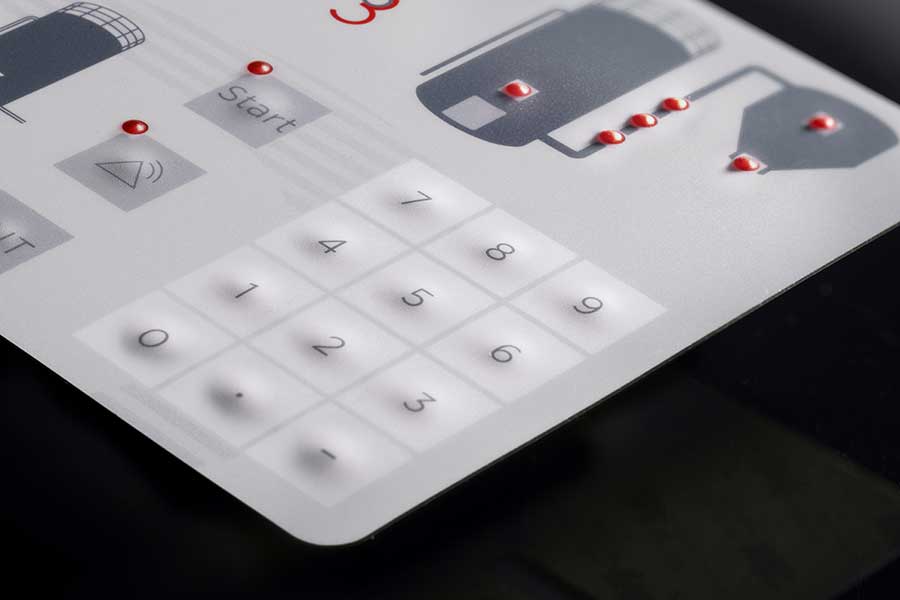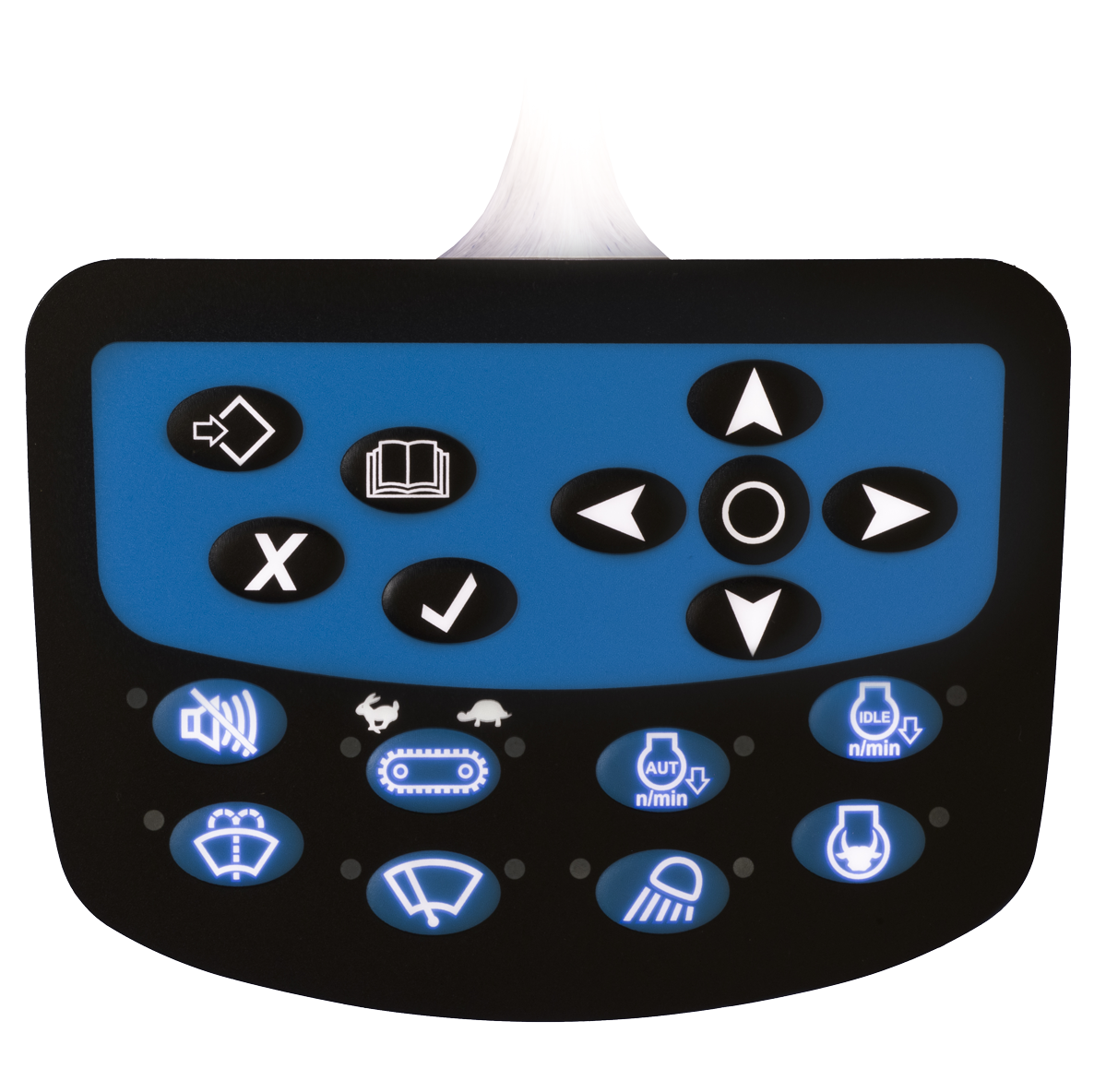Learning About the Manufacturing Process of High-Quality Membrane Switches
Learning About the Manufacturing Process of High-Quality Membrane Switches
Blog Article
Membrane Layer Change Innovation: The Key to Dependable and Cost-Effective User Interfaces
Membrane layer button technology has actually arised as a pivotal element in the style of user interfaces, supplying both reliability and cost-effectiveness across a diverse array of applications. As we discover the diverse benefits of membrane buttons, their capacity for advancement elevates inquiries regarding future applications and advancing patterns.
Comprehending Membrane Switch Over Technology
Membrane layer button modern technology is a widely made use of interface option in various electronic devices, providing a seamless blend of capability and layout. This technology incorporates multiple layers of materials, typically consisting of a graphic overlay, spacer layer, and a circuit layer. The graphic overlay shows the interface aspects, while the spacer layer separates the circuit layer from the overlay up until a customer turns on a button.
When stress is related to the overlay, the circuit layer finishes the electric circuit, sending out a signal to the gadget. This system enables various setups, consisting of responsive comments and backlighting choices, enhancing individual interaction. Membrane buttons are generally produced using sturdy materials such as polyester or polycarbonate, ensuring long life and resistance to ecological factors like dampness and dirt.
The versatility of membrane layer switches over allows their application in diverse industries, consisting of clinical devices, consumer electronic devices, and commercial controls. Their small design permits for integration into space-constrained atmospheres, supplying an effective interface without jeopardizing aesthetic charm. Comprehending the intricacies of membrane layer switch technology is important for producers and designers seeking to develop dependable and effective human-machine user interfaces.
Key Benefits of Membrane Layer Switches
While various user interface options exist, membrane layer switches deal unique benefits that make them a recommended option in numerous applications. One of the primary advantages is their longevity; membrane layer buttons are developed to hold up against rough ecological conditions, consisting of moisture, dust, and temperature level changes, making sure resilient efficiency. This strength substantially decreases the need for frequent substitutes, thereby reducing total maintenance expenses.

Furthermore, membrane layer buttons are light-weight and portable, making them suitable for applications where space is restricted. Their inconspicuous design contributes to a sleek appearance without compromising functionality.
Cost-effectiveness is also a noteworthy advantage, as the manufacturing process for membrane layer switches over often tends to be cheaper compared to typical mechanical switches. This affordability, combined with their reliability and ease of setup, settings membrane switches as a sensible remedy for a variety of industries looking for reliable and reliable interface.
Applications Across Numerous Industries
Just how do membrane layer switches adapt to the varied needs of various markets? Membrane layer button innovation is progressively recognized for its convenience, making it appropriate for a wide array of applications throughout several fields. In the clinical area, membrane switches are made use of in analysis devices and patient monitoring devices, where their longevity and simplicity of cleaning are essential for preserving health requirements. The automotive market employs these buttons in dashboards and control board, providing a structured aesthetic while making certain easy to use procedure.
In consumer electronic devices, membrane layer switches supply a compact solution for push-button controls and home appliances, improving customer experience with instinctive design. Furthermore, the commercial sector leverages membrane buttons for equipment control board, gaining from their resistance to extreme settings, such as moisture and dust.
Armed forces and aerospace applications additionally make use of membrane switches for their reliability and ability to stand up to severe problems, making certain operational effectiveness in critical anchor circumstances. The food and drink sector adopts these switches for automated systems, where hygiene and ease of operation are vital (membrane switch). Ultimately, membrane layer buttons are tailored to satisfy the special needs of each industry, showing their crucial role in modern-day innovation user interfaces
Style and Personalization Choices

In the realm of membrane button modern technology, layout and personalization options play a pivotal role in enhancing capability and customer interaction. These switches can be customized to satisfy particular operational requirements and visual preferences, making them versatile parts in different applications.
One of the key personalization choices is the layout of the button itself, which can be developed to accommodate unique customer interfaces and ergonomic considerations. By changing the form, dimension, and plan of buttons, suppliers can produce intuitive styles that promote simplicity of use. In addition, the incorporation of various colors and visuals overlays permits branding and improved presence, making sure that individuals can rapidly recognize functions.
Moreover, membrane buttons can be engineered with different responsive comments devices, such as raised switches or distinct clicks, to boost the individual experience. Various materials can likewise be best site selected for durability and environmental resistance, resolving aspects such as moisture, temperature variations, and chemical exposure.
Inevitably, the comprehensive layout and customization alternatives readily available in membrane switch modern technology empower services to create tailored solutions that not just fulfill functional requirements however also align with their branding and operational requirements.

Future Fads in Membrane Switches
As membrane switch innovation proceeds to advance, future trends are increasingly focused on improving customer experience and integrating advanced capabilities. One significant trend is the integration of touch-sensitive and capacitive innovations right into traditional membrane layer buttons. This development enables even more user-friendly individual interfaces, supplying responsive responses while preserving a smooth layout.
An additional arising trend is making use of eco-friendly products, driven by the growing demand for sustainable manufacturing practices. Manufacturers are looking for to lower their carbon impact by making use of recyclable substratums and low-impact inks, lining up with worldwide sustainability objectives.
Additionally, the rise of the Internet of Points (IoT) is triggering the consolidation of wise attributes right into membrane switches. Boosted connection alternatives will allow gadgets to communicate with each various other, enabling seamless assimilation right into wider systems.
Additionally, advancements in printing modern technologies, such as electronic printing, are enabling better style flexibility and modification. This allows manufacturers to generate elaborate styles and vibrant shades cost-effectively.

Verdict
In final thought, membrane button technology represents a crucial technology in interface design, offering substantial advantages in toughness, personalization, and cost-effectiveness. Its prevalent applicability across varied markets emphasizes its significance in modern-day technology. As improvements remain to emerge, specifically in touch-sensitive interfaces and sustainable products, the potential for membrane changes to boost user experience and capability remains appealing. Continued exploration of this modern technology will look here likely produce additionally enhancements and widen its scope in future applications.
Report this page